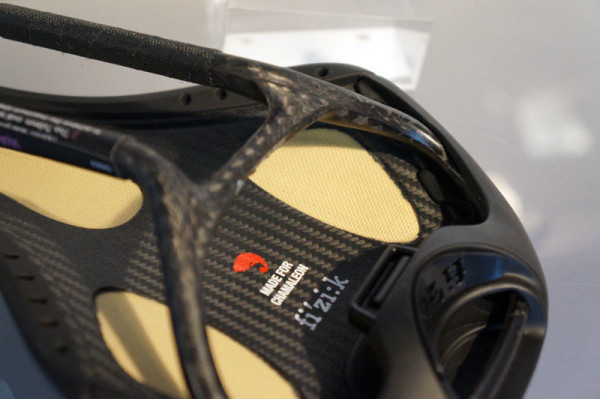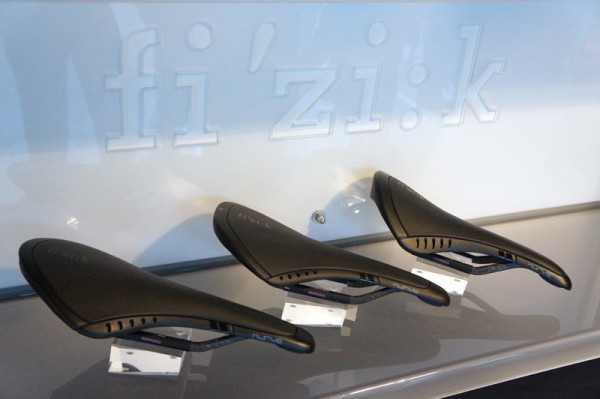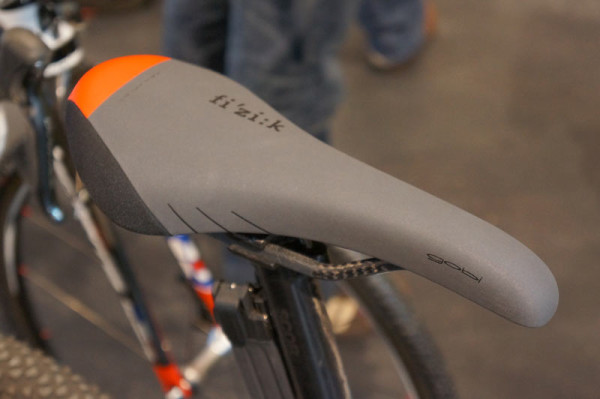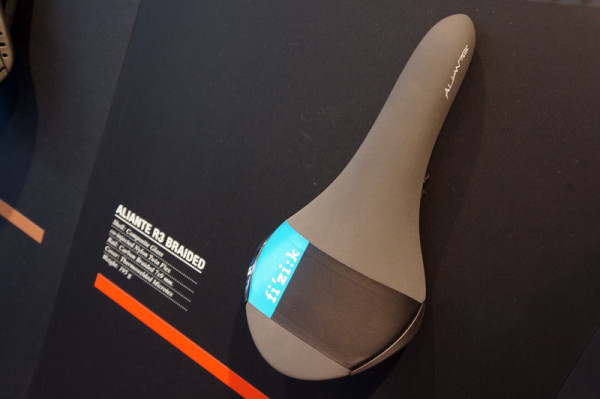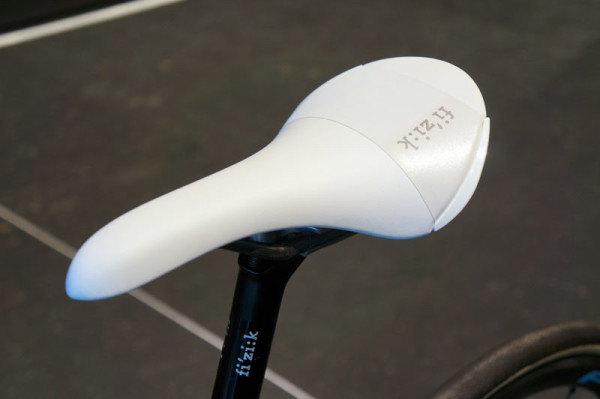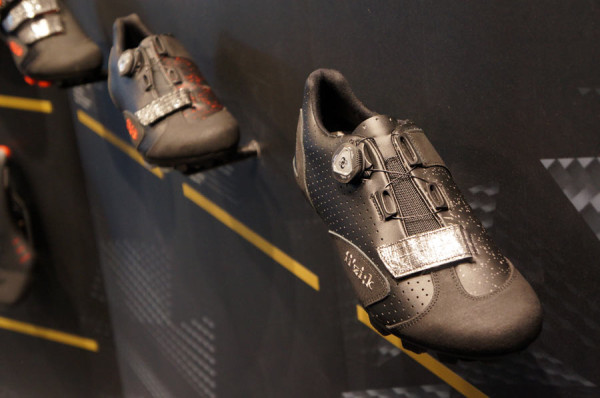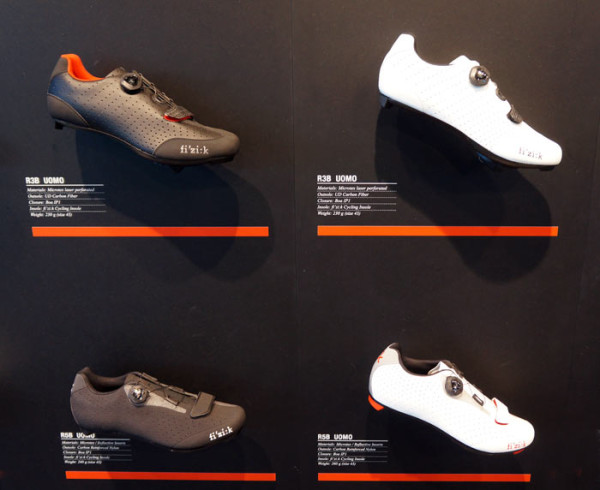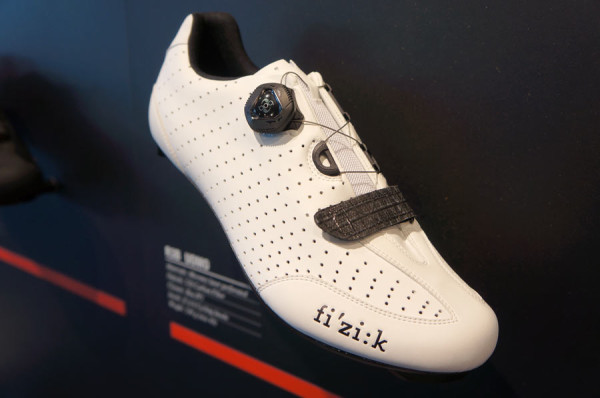Fizik introduced their Kurve saddles concept in 2011 with alloy Mobium rails and an adjustable stiffness system that let you customize the already flexible shell to suit your needs. We reviewed those here.
For 2015, the new Kurve Re:Flex saddles replace the glass fiber base of the originals with Kevlar to make them more flexible under your weight. That lets the shell provide most of the comfort rather than relying solely on the padding. And indeed, it’s easily flexible at the edges of the shell and through the entire structure without feeling mushy. They also gain a carbon fiber rail option to save weight.
The Kurve models aren’t the only ones updated…the classic Aliante gets a refresh and the excellent Gobi sees a few tweaks, too…
The Kurve saddles follow Fizik’s Spine Concept, which shapes the saddles to accommodate flexibility and riding style.
The Gobi, which is their top selling saddle, gets updated with the latest tech they’ve been putting on their road saddles. Since it’s a MTB saddle, they blended the shell material and gave it the newest nylon or carbon Wing Flex material on its edges.
The uppers get a Microtex material, but it’s left rough on the M3 Braided model that feels like suede. The M1 Braided version gets a full carbon composite shell with Wing Flex and Tail Flex and hits the scales at an astounding 155g – darn light for a full featured mountain bike perch! The M3 Braided gets a composite glass co-injected nylon Wing Flex base and is only 10g heavier. I’ve been running the original on my ‘cross bike for more than a year and love it…just enough tail kick to provide good hip rotation and power, but easy enough to slide off the back and dismount/remount the bike. The only complaint is that it’s a bit heavy, but these new carbon railed models solve that and should be even more comfortable!
The Aliante was one of the first big successes for Fizik, and over the years the shape hasn’t really changed. Now, it gets an update to fit closer to their Spine Concept. The nose gets a little slimmer, the tail kicks up a bit more and it loses the notch in the back.
It gets the same carbon/nylon and carbon/fiberglass shell options with carbon or K:ium rails. Weight sits below 185g for the R1 model.
Not shown, the Tritone triathlon saddle gets a wider version called the 6.5. The name refers to the nose width in centimeters. They found that taller men and most women preferred the wider model. Available in both carbon braided and K:ium rails.
The Cyrano seatpost gets a new design with 25mm setback on the triangular full carbon head. Prior models had a bonded alloy head. It gets titanium hardware and comes in at just 175g for a 27.2/330mm size. Considering the adjustability and deep rail supports, that’s pretty light.
New M3B and M5B mountain bike shoes get the BOA IP1 dual direction closure. The fit is a bit thinner than their regular M3 and M5 and gets a Microtex upper and anti scratch leather on the heel and toe. They’re more of a race shoe than the standard ones, and they’re a bit lighter (~15g savings) since there’s no buckle. Available in men’s and women’s versions.
For the road, the R3B and R5B get the BOA IP1 closure (the B on the end of the model name means Boa, a standard ratchet version remains in the line for both road and MTB). These also get the Microtex upper and slightly different finish on the instep. They tweaked the heel pad to make it easier to replace.
The key difference between the 3 and 5 models is a carbon fiber sole versus a carbon reinforced nylon sole. The uppers and other features are the same.
The 5-series, shown here in the Donna women’s version, get reflective panels on both sides of the upper.

